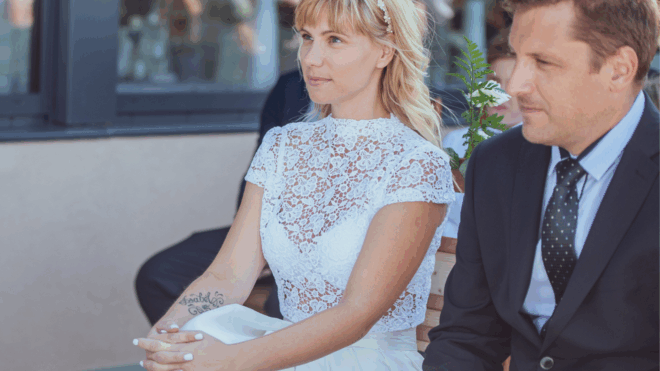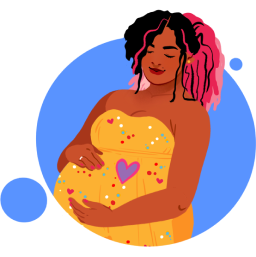
The day I was diagnosed with breast cancer, the breast surgeon’s nurse handed me a stack of glossy brochures. When I returned home from my appointment, I promptly buried them in a drawer. I wasn’t ready to face the fact that one minute I was a mom of four, and the next minute, I was a mom of four fighting breast cancer.
Weeks later, I stumbled upon the brochures when searching for a document. I tentatively pulled them from the drawer and spread them out on the kitchen counter. Each of them looked nearly identical. An older woman, easily a grandmother, stared back at me. One wore a scarf over her head. Another one was smiling gently, with a nurse escorting her on a walk through a serene garden. Brochure after brochure featured a woman who looked nothing like me.
I was 35 the first time I was diagnosed
My daily uniform was a top knot, oversize sunglasses, a thermos of coffee, and a quick swipe of mascara. My hair was highlighted in different colors, depending on the season — not a gray strand in sight. I looked healthy, and I was. I ate a balanced diet, exercised most days of the week, and tried to get fresh air as often as possible.
Breast cancer, however, didn’t care that I was deemed “too young” for a yearly mammogram. Breast cancer also didn’t care that I was raising four children, working, and trying to manage my house. You see, breast cancer doesn’t choose its prey based on income, religion, race, sex, education, or anything else. Cancer, if you don’t already know, is sneaky. It shows up when it pleases, without regard for how busy its victim is.
I am not alone
The CDC reports that “breast cancer is the most common cancer in women in the United States.” What’s staggering is how common breast cancer is. One in eight women will face this diagnosis in her lifetime. Approximately 9% of breast cancer cases occur in women younger than 45.
Translation: Younger breast cancer patients look nothing like the model patients on breast cancer brochures, in commercials, or in any other type of advertising. The problem is how misleading these advertisements are. Young women, too often, mistakenly think they are safe from the disease. They may believe that breast cancer is a disease for older women, those who are nearing or are in their grandmother years. That’s not how cancer works, though.
You may also believe that if you don’t have a biological family member with breast cancer, you’re in the clear
Mammograms and self-exams are reserved for those more at risk. However, this simply isn’t true. The reality is that only 5% to 10% of breast cancer cases are thought to be hereditary, those caused by genetic mutations.
The more vocal I have been about having breast cancer — now twice — before my 40th birthday, the more younger women I’ve heard from who have the courage to share their story with me. Despite it being 2022, a lot of people still don’t want to talk about breast cancer, treating it as something taboo.
Unfortunately, breast cancer isn’t rare
It’s important that younger women with breast cancer have a voice, an opportunity to share their story. The more we share with others what we’ve faced, the more likely others are to do their monthly self breast exams and schedule their mammograms. They’re also more likely to ask their biological family members to detail family medical history.
It's cliché, but it’s true. Early detection saves lives. The earlier the risk is known, the more proactive a woman can be. The earlier breast cancer is detected, the better the outcome for the patient. It’s time to ditch the stereotypical cancer brochures and embrace the reality.




